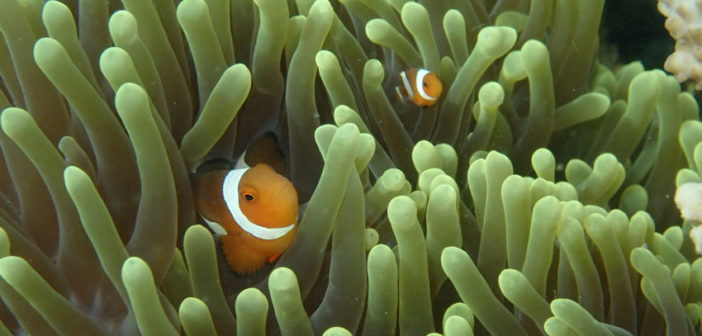Researchers from Flinders University in South Australia have found that increasing the amount of artificial light at night (ALAN) masked natural cues, which prompt clownfish eggs to hatch.
The problem is being further exacerbated by increasing urbanization in coastal areas where artificial light spills out into reefs close to shore.
The Saving Nemo foundation was established by Flinders University and the University of Queensland in 2005 to breed clownfish and raise awareness of their declining numbers in the wild.
The small distinctive orange and white fish became popular aquarium additions following the global success of the 2003 Disney animated film. Despite the movie’s conservation message, the sudden increase in demand severely impacted wild clownfish populations.
In their latest project, Saving Nemo research director Dr. Emily Fobert monitored 10 pairs of breeding clownfish of varying sizes. All of the clownfish studied were part of the same species, Amphirprion ocellaris, the most common of clownfish species, also known as the false clownfish.
There are 30 species of clownfish, most of whom live in anemones in the shallow waters of the Indian Ocean, the Red Sea and the western Pacific.

False clownfish, the species used in this study. Image credit Tony Shih, CC BY-SA 3.0.
Half the fish Dr. Fobert observed in the study were exposed to low levels of overhead LED light at night. The LEDs imitated commercially available and widely used lights near coral reefs. The other half were exposed normal daylight and darkness.
“I monitored the clownfish for two months and I looked at frequency of spawning – so how often they are laying eggs – the fertilization success and then the last thing I looked at was their hatch rate,” Dr Fobert said.
Clownfish are attuned to lunar cycles and often lay their eggs around the full moon. They’ll lay between 100 and 1500 eggs in a single clutch, with the number of eggs depending on the clownfish’s age, health, diet and species. After about eight days, and within a few hours of sunset, the little Nemos hatch.
Dr. Fobert said although the number of eggs laid didn’t change due to the artificial light, none of the eggs exposed to LED lights hatched.
“Whereas the controlled fish, or the controlled eggs, had an 80 percent hatch rate,” she said.
The research team turned off the artificial nightlights and continued to monitor the fish for a further 60 days after the initial trial. Without the artificial light, hatch rates soon returned to 80 percent.
Dr. Fobert said the results indicated increasing amounts of ALAN had the potential to significantly reduce the reproductive fitness of reef fish that settled in habitats near the shore. She is now examining other species of reef fish that share similar reproductive behavior to see if they are affected by ALAN.
The results from the new study by Flinders University and the University of Melbourne were published recently in Biology Letters.
While Dr. Fobert said there was no clear solution to tackling ALAN near coral reefs, researchers were looking at a number of ways to reduce the impact of light on marine biology.

Tourism and development built right over the top of coral reefs may adversely affect the reefs because of their use of artificial lights at night. Image credit vgm8383, CC BY-SA 3.0.
“As humans we rely really heavily on light at night because we’re diurnal species, we can’t see at night without the light. So, I don’t think it’s going to go away any time soon. But I think we can start thinking about different ways that we can reduce and mitigate the impacts,” she said.
“For example, there’s hotels on tropical islands built over the top of coral reefs and a lot of them actually have glass floors with lights shining directly down onto the reef so that tourists can see the fish. That might not be entirely necessary, especially if the resorts want to attract the fish and have the fish living there.”
Dr. Fobert said other options to reduce the impact of light include motion censored streetlights.
Featured image: clownfish in an anemone. Image via The Lead South Australia.





